(upper image) ©Gramzio Kohler Research
While we all share the same planet, only a few of us have expressed concerns for the earth’s well-being and about the amount of damage wreaked upon nature. Making improvements to the convenience of our quality of life has now reached a state of no recovery, and we are now aware of the need to unite to tackle this shared challenge of our age described as climate change, or climate crisis. We must review what we have long taken for granted and ask ourselves: ‘does this threaten the environment?’ Correspondingly, what can we ask of architecture and what will improve our quality of life and human dignity in the midst of our ongoing climate emergency? What should we do? By reviewing a building’s life cycle from production, maintenance, and demolition, in the context of climate crisis, we will examine pertinent responses in this issue of SPACE.
STEP 1: During Construction
Question 1: How Deep and Wide Are We Digging?
Question 2: Can We Replace the Materials Most Frequently Used by Our Building Industry?
Question 3: Is It Possible to Produce Materials to Build in the City?
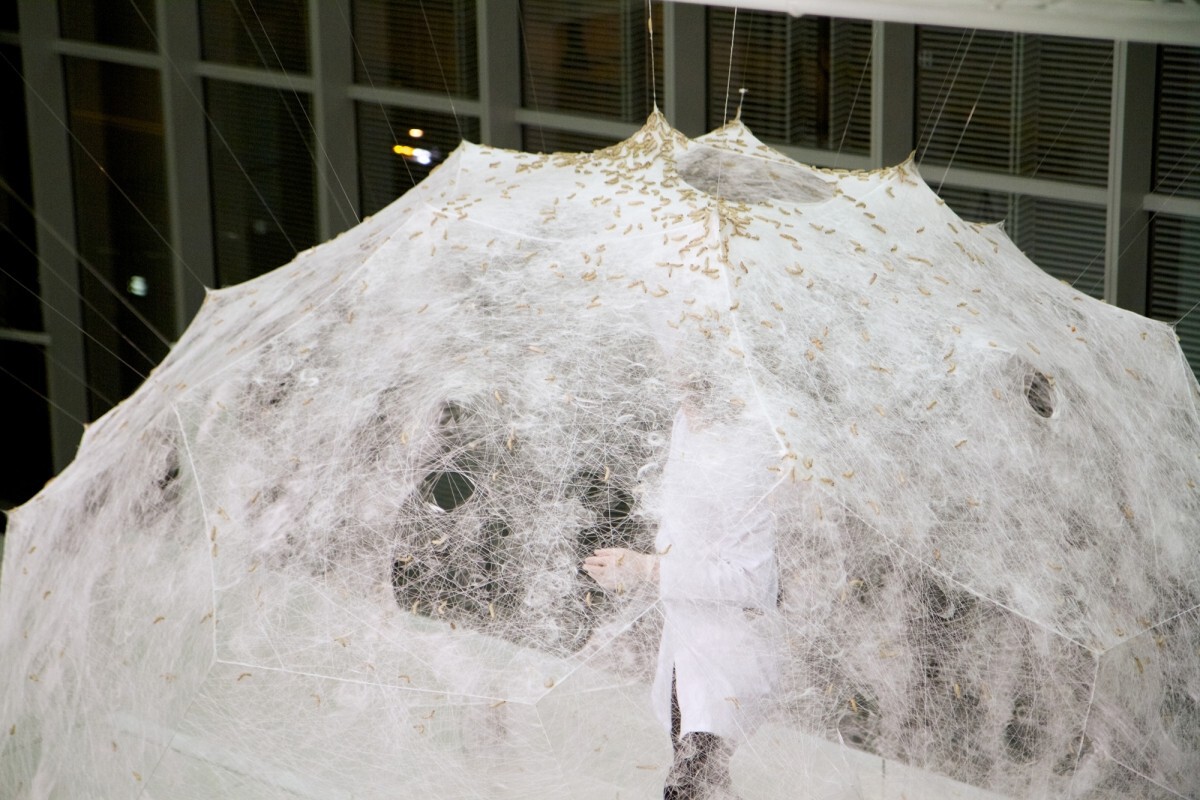
Some of the materials use are considered irreplaceable in terms of the building process. Concrete, iron, and aluminium are such cases, used over a long time because of the ease of their production and construction. However, lots of carbon is emitted in the mining and manufacture of raw materials to obtain these materials and to transport them to construction sites. According to data released in 2020 by Architecture 2030, a non- profit architectural organisation established to cope with the climate crisis, the amount of carbon emitted by concrete, iron, and aluminium accounts for about 23% of the annual carbon emissions on earth. With a growing social consensus that this fact should be taken more seriously, the number of materials that consider carbon reduction is on the rise, with performance comparable to that of more frequently-used materials.
Now, Glue Laminated Timber (GLT) and Cross Laminated Timber (CLT), which can be easily found in mixed wooden structures, are representative examples of the current phenomenon. GLT is a synthetic wood that increases shearing force by bonding several wooden plates in the fibre direction, and CLT is a wooden product that is agglomerated by intersecting the wooden plates at right angles. Since CLT is made by overlapping it in different directions, there are few twists and cracks (often pointed out as a disadvantage of wood). In addition, it is typically used as a substitute for reinforced concrete because it has excellent humidity control and can be applied in prefabricated construction methods.▼1 Due to its excellent performance, several architects have used CLT in their buildings, and, more recently, some of these examples have been published in SPACE. There are a number of other cases: Hasley Hamlet by Shigeru Ban Architects + Gansam Architects & Partners (covered in SPACE No. 646), which used it as a construction material and in concrete formwork. Icheon Manwhajae (covered in SPACE No. 644) by Soltozibin Architects, which used it to reinforce the wooden structure of the hanok and to reduce the proportions of new construction works, N House (covered in SPACE No. 640) by SOSU ARCHITECTS, which used it to create a lattice-shaped ceiling structure rather than a single-framed structure.
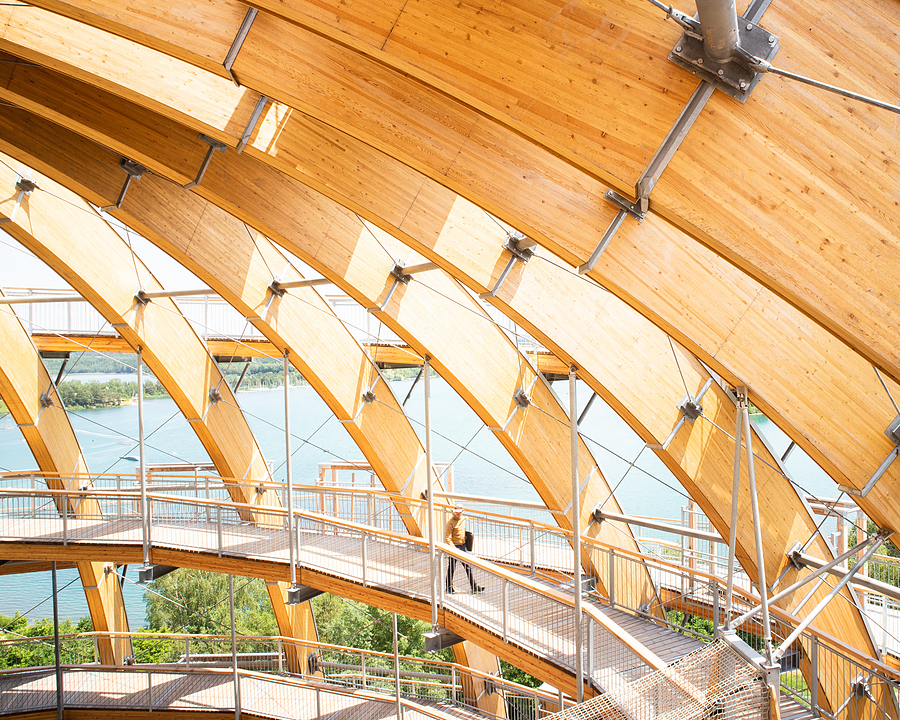
ⓒCorvin Oelschlaeger
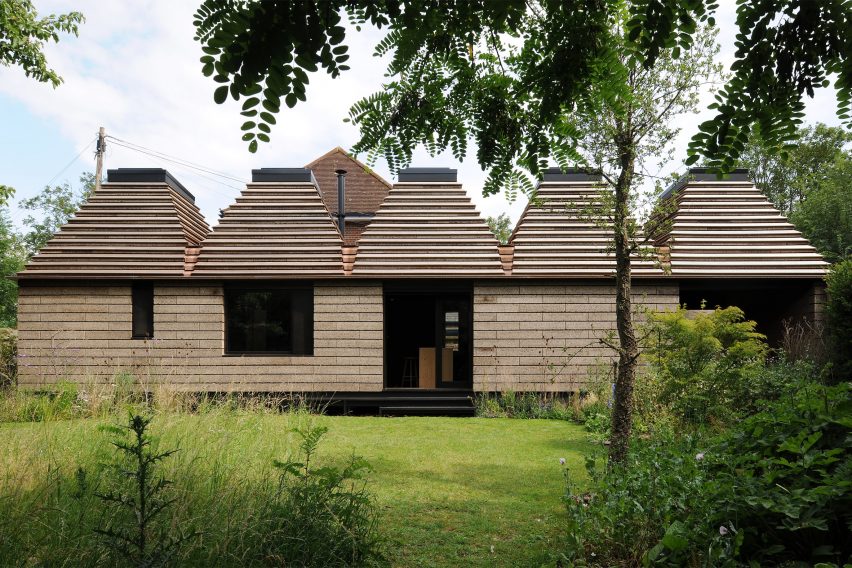
ⓒDavid Grandorge
Not as well known as CLT, other new architectural materials capable of replacing more commonly used materials are currently in development and used on construction sites. Concrete, which results in the emission of more than 1.5 billion tons of carbon every year, is expected to be replaced by industrial and agricultural waste. After incinerating by-products from goods and foods that are no longer consumed (fly ash, silica fume, rice husk, palm oil, sugar cane, and so on), a fine powder is made. When the powder is mixed with water, a concrete-level rigid material is created.▼2 Iron, the world’s second most traded raw material after oil, emits 1.83 tons of carbon on average when smelted with one ton of iron. In other words, it produces more carbon than iron. Iron has almost been entirely replaced by bamboo in the past century ago. In 1914, H. K. Chow (professor, Massachusetts Institute of Technology) experimented with reinforcing concrete structures using small- diameter bamboo beams, and in 1944, H. E. Glenn (professor, Clemson University) built buildings with bamboo-reinforced concrete. Since then, there have been several more design attempts, but bamboo has not been able to withstand the contraction and expansion of concrete, making it impossible to create a stable structure.▼3 However, a recent experiment by Dirk E. Hebel (professor, ETH Zürich) achieved a significant result. Hebel mixed bamboo fibers and aqueous resins at a ratio of 8:2, and then pressed the mixture into a frame to devise structural reinforcement. It seems too early to commercialise this process immediately, but this structural reinforcement is said to have about three times higher durability and stress intensity against moisture and thermal expansion than living bamboo.▼4 Attempts to convert masonry materials are also steadily continuing. Clay bricks made of soil do not seem to cause much harm to the natural environment, but emit a significant amount of carbon when producing the material. This is because in order to improve the quality of this material, people mainly choose to bake clay bricks in a kiln rather than to dry them in sunlight. A cork block, referred to as an alternative to clay brick, is made through compression and a chemical reaction, with no need for high-temperatures. This masonry material is made by condensing the bark of a cork tree, and even if it is peeled continuously, it is also called a ‘carbon-free material’ because it does not affect the survival of the tree. In 2019, this material began to become famous after the British-based Berkshire Architecture Studio built a single-story house ‘The Cork House’. The architect of this house designed a structure in which blocks mesh together not to use mortar and adhesive, which also gave the building the possibility of dismantling and recycling materials for other purposes.▼5 (written by Kim Yeram)
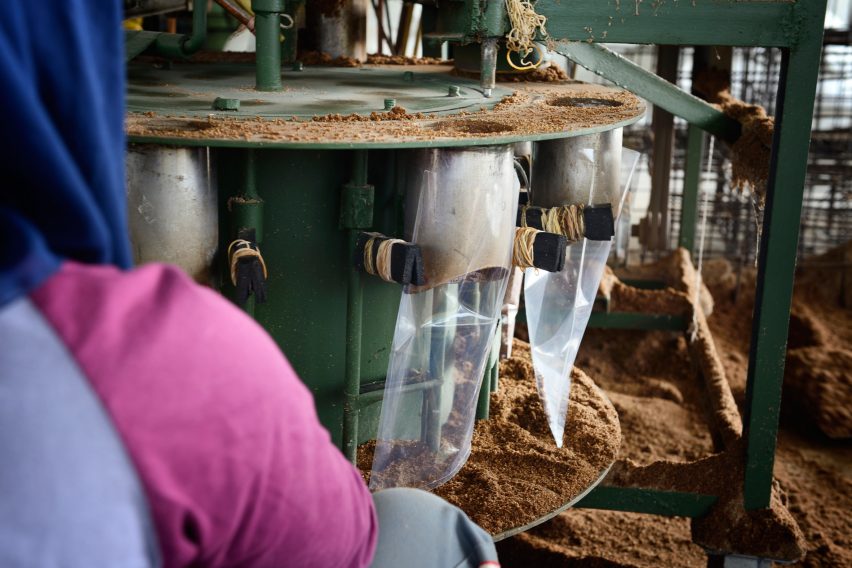
©Sustainable Construction, Karlsruhe Institute of Technology, Carlina Teteris
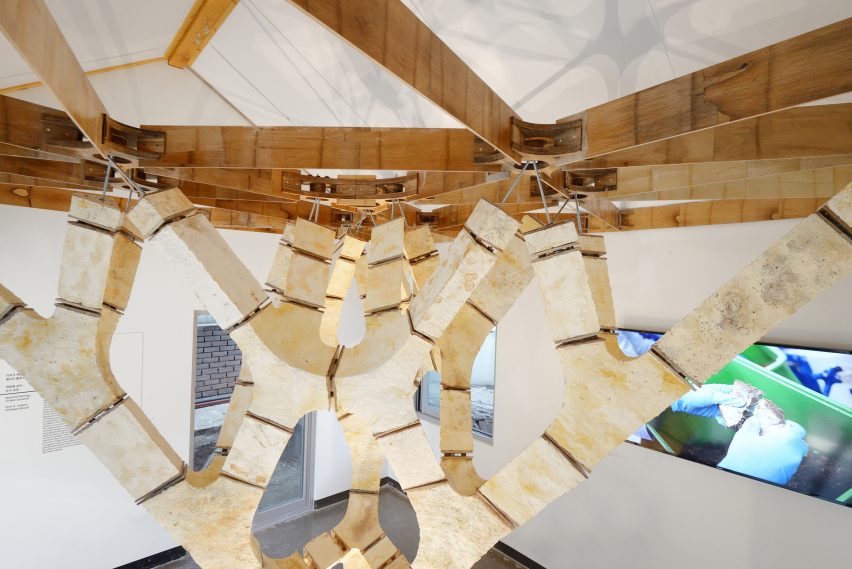
©Carlina Teteris
Another alternative, BioBrick, refers to a brick made using chemical reactions derived from organic nutrients, of which a notable example is taking place in South Africa. Dyllon Randall (professor, University of Cape Town) made a BioBrick by combining sand, urine, bacteria, and urease, which is an enzyme that breaks down carbon dioxide and ammonia. When these elements are mixed, calcium carbonate crystals are made, and if you want harder bricks, you can extend the time bacteria work in the mould.▼6 Microorganisms also reveal new possibilities in the fight to replace plastics. Introduced in 2017 by researchers at Karlsruhe Institute of Technology and ETH Zürich, MycoTree is a pavilion made of mushroom mycelium. The researchers completed the structure by putting sawdust and sugar cane in the mould to encourage the mycelium to grow, and then waiting for two weeks to obtain a cytosponge block. It seems similar to the characteristics of plastic in that any type of block can be made by changing the shape of the mould. With dozens of mycelium blocks, two-storey structures can be built, but the current technology-made mycelium structure is made of a sponge-like texture protein, making it difficult to install outdoors with relatively many atmospheric variables.▼7
In fact, many of the alternatives to contemporary materials are insufficient when it comes to immediate application on site. However, it is not possible to continue to use materials that emit carbon excessively in the climate crisis. Perhaps, what we can and must do is to ask questions in this situation, and maintain an informed scepticism over whether materials and technologies that have been used inertially will adversely affect the natural environment.
1 Kim Taejoon, Timber market trends in major countries – Cross Laminated Timber (CLT), Korea Research Institute for Construction Policy, 2021.
2 Ubani Obinna, ‘Cement Replacement Mateials in Concrete’, Structville, 2021.
3 Dirk E. Hebel, Felix Heisel, ‘Alireza Javadian, Bamboo Composite Reinforcements in Structural Concrete Applications’, Book of Abstracts and Proceedings International Conference on Advances in Cement and Concrete Technology in Africa, 2013.
4 Marcus Fairs, ‘Bamboo fibre is stronger and cheaper than steel, says Dirk Hebel’, Dezeen, 2015.
5 Lizzie Crook, ‘Recyclable house is built from cork blocks’, Dezeen, 2019.
6 Helen Swingler, ‘Questions on bio-bricks grown from urine answered’, University of Cape Town News, 2019.
7 Editorial team, ‘A spatial branching structure made out of load-bearing mycelium components’, Change Lab, 2021.





